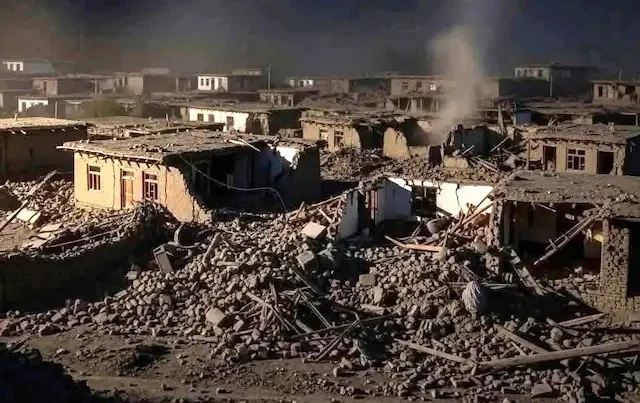On the night of August 31, 2025, Afghanistan was once again reminded of its place along one of the world’s most dangerous fault lines. At 11:47 p.m. local time, a magnitude 6.0 earthquake struck near the Pakistan border, with its epicenter located just 27 kilometers east-northeast of Jalalabad in Nangarhar Province. Though moderate in strength, the quake’s shallow depth of 8 kilometers, with at least 5 aftershocks, turned it into a deadly disaster in a region where mud-brick and poorly reinforced homes dominate.
A Nation in Ruins: Casualties and Rescue Struggles
The jolt devastated Nangarhar and Kunar provinces, shaking mountain districts like Nur Gul, Soki, Watpur, Manogi, and Chapadare. Entire villages rest in steep valleys, destroyed within seconds, trapping families in their sleep. In Jalalabad, cracked walls and falling ceilings sent people running into the streets in panic. The quake also knocked out electricity and phone networks across Nangarhar, leaving survivors cut off and complicating the coordination of urgent rescues.
Early reports underestimated the scale. The Associated Press initially cited only 15 injuries in Nangarhar. But as morning came, hospitals were swamped, reporting at least 250 dead and 500 injured. By the following day, Al Jazeera and ABC News raised estimates to 500 killed and 1,000 wounded. However, as of recent updates, there are more than 800 fatalities and 2500 injuries. Rescue operations faced extreme obstacles.
The quake’s epicenter lay in rugged terrain where narrow, damaged roads and landslides slowed convoys, especially in Kunar and Nangarhar. Roughly 40 air missions using helicopters lifted and ferried the injured to hospitals, but shortages of fuel and supplies hampered efforts. Survivors dug through rubble with their hands, listening for faint cries. In too many cases, the voices faded before rescuers could arrive. The shockwaves reached beyond Afghanistan.
Shocks were felt strongly in northwestern Pakistan, particularly in Peshawar, Chitral, and across Khyber Pakhtunkhwa province, where residents rushed into the streets. Pakistani authorities confirmed structural damage and some injuries but avoided large-scale fatalities. The quake was also recorded in India’s Jammu and Kashmir, demonstrating the extent to which its energy had traveled across the Hindu Kush fault system.
Fault Lines and Fragility: Why Afghanistan Suffers More
The disaster emphasizes Afghanistan’s seismic vulnerability. The United Nations Office for the Coordination of Humanitarian Affairs (OCHA) observed that fragile housing, mountainous terrain, and weak infrastructure transform moderate earthquakes into major tragedies. The Los Angeles Times reported that families were crushed instantly in their homes, with many never having a chance to escape. This earthquake is not an isolated incident.
Afghanistan sits at the junction of the Indian and Eurasian plates, making it one of Asia’s most active seismic regions. Past disasters confirm this: the 2002 Hindu Kush quake killed over 1,000; the 2015 Badakhshan quake caused more than 400 deaths; and the 2022 Paktika quake resulted in over 1,000fatalities. However, earthquake-resistant construction and preparedness programs remain delayed, especially since international aid declined after 2021.
Forgotten by the World: A Humanitarian Plea
For a nation already battered by decades of conflict, sanctions, and isolation, such disasters hit hardest. Relief agencies warn that many deaths follow not from the quake itself but from untreated injuries, lack of medicine, and exposure. “It is not just the earthquake that kills,” one Red Crescent official said, “but the lack of infrastructure and global support”. As Afghanistan buries its dead, the August 31, 2025, quake exposes once again how natural tremors and man-made vulnerabilities combine to lethal effect. Survivors, grieving in silence, voice a plea to the world:
“We have lost too much already. The earth keeps taking, and the world keeps forgetting us”.



